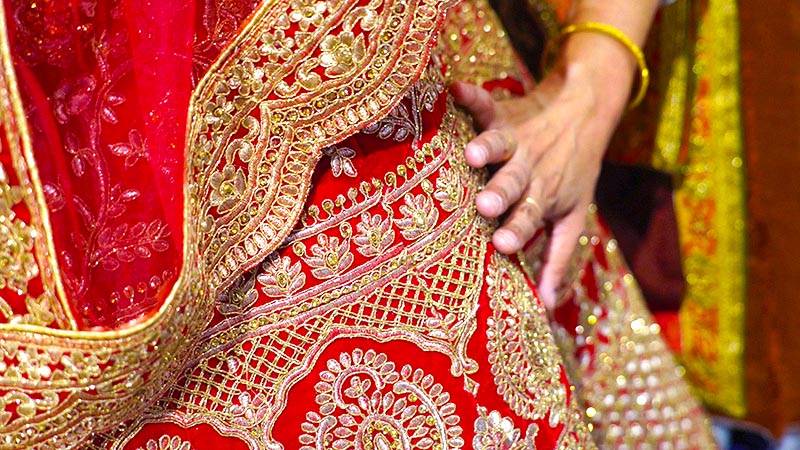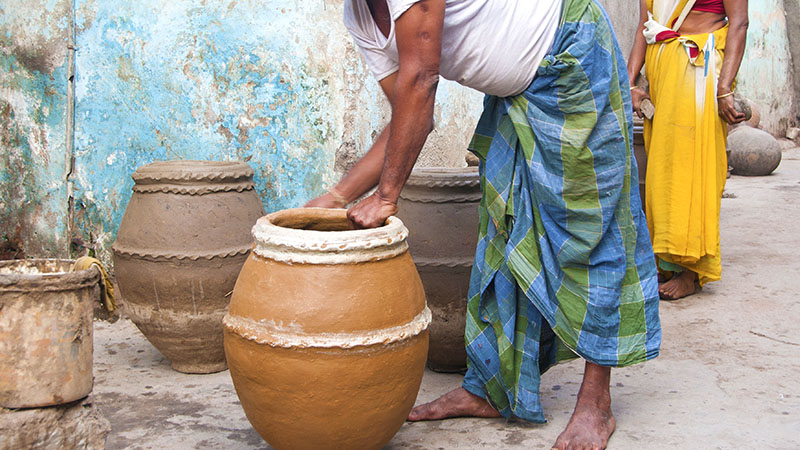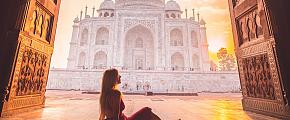India's Traditional Attire: Styles, Accesories & Tips
When starting your vacation in India, you'll see traditional attire shine in the streets. Sarees, Punjabi suits, Dhotis, etc., are the perfect combination of art and practicality, showing unparalleled styles and customs. If you're interested, read this article to feel their colors and diversity.
Introduction to Traditional Indian Attire
Traditional attire of India has a long history, dating back thousands of years. People used cotton and linen to make clothing at that time, then forming a diverse style and fabrics due to many cultures and religions.
Main Fabrics and Craftsmanship
With rich colors, unique patterns, and weaving techniques, regions have different specialty fabrics and superb craftsmanship. Silk is usually used in weddings and festivals for its smooth texture and gorgeous appearance; cotton and linen are for daily clothing because it is light and breathable; jute is often used in shawls and waistcoats. In addition, craftsmanship like embroidery adds gorgeousness and exquisiteness. The combination of these fabrics and craftsmanship has formed the unique beauty of traditional Indian clothing.
Common Accessories and Adorments
Traditional attire of India is often paired with exquisite accessories, enhancing the overall look. Jewelry, including necklaces, earrings, and bracelets, shows luxury and refinement. Headwear like Turban, is particularly important in weddings and festivals. Scarves and shawls are often used in women's sarees and shalwar kameez. Besides, handmade shoes, Jutti for women and Mojari for men, add to the overall ethnic style.
 Saree
Saree
Regional Variations
Traditional attire of India is varied, and the different styles, colors, and materials of each region reflect their culture and climate.
In the north, rich embroidery and heavy fabrics are suitable for cold climates. The colors are bright, with red, orange, gold, and other common colors showing the festive atmosphere.
Light cotton materials are often used in the South to adapt to the hot and humid climate, and the colors are mainly green, blue, and yellow, often with complex or symbolic patterns.
The East emphasizes elegance and tradition, using high-quality fabrics such as silk. It is exquisite and its colors are soft, including light pink, off-white, and more.
The west features bright colors, lots of beadwork, and mirror decoration. Affected by the dry climate, the fabrics are thin and light, with various styles and rich national characteristics.
Styles of Traditional Indian Attire
Saree
Saree is a traditional attire of India for women, consisting of a piece of cloth usually 5 to 9 yards long, which women wrap around their bodies to show elegance and beauty. Its fabrics vary, including silk, cotton, georgette, and more. Besides, colors have a wide range of choices, such as red, orange, blue, and pink, and patterns are common in flowers, geometric figures, and ethnic patterns. It is suitable for many occasions, such as Diwali, weddings, and family gatherings. It can not only reflect culture and tradition but also show the elegance of women.
Lehenga Choli
Lehenga choli, an Indian female attire in certain regions like Gujarat and Rajasthan, consists of a long skirt and a short top, usually paired with a scarf. With its elegant design and ornate decoration, it is widely worn for many occasions, especially weddings, festivals such as Diwali and Holi, as well as family gatherings and cultural events. Lehenga choli makes women exude grace and confidence and is a beautiful symbol.
Sherwani and Achkan
Sherwani and achkan are style-like jackets, usually worn on formal occasions. Sherwani is usually a long outer garment made of fabrics like silk, cotton, or wool, with rich colors and intricate patterns. It is usually worn with long or loose trousers and a scarf, is more formal and grand, suitable for weddings and receiving guests. While achkan is shorter and made of soft-toned fabrics such as white or beige, with a relatively simple design. It is worn with shorts or long trousers and a belt, and is suitable for family gatherings and more relaxed celebrations.
Dhoti
Dhoti is a traditional men's garment in India, typically made from a long piece of fabric that is wrapped around the waist and legs. It can be crafted from various materials, including cotton, silk, and blended fibers, offering different comfort levels. In terms of color, dhoti has a wide range of choices, from classic white and beige to bright red, blue, and green. Additionally, many dhotis have exquisite borders to add visual effects. It is suitable for many occasions, such as festivals, weddings, and religious ceremonies, and can be worn as daily wear. In a word, dhoti reflects a sense of cultural tradition and shows the grace of wearers.
Punjabi Suits
Punjabi suits consist of a loose long shirt and loose trousers, paired with a turban or a shawl, with fabrics like cotton, silk, or linen. The colors of men's suits (salwar kurta) are mainly white, blue, and gray. Bright colors like red and yellow are used during festivals. Women's suits (salwar kameez) are decorated with beautiful embroidery or sequins in bright colors like pink, green, and red. The clothing is widely used in religious ceremonies, weddings, festivals, and daily life, especially in summer, because of its breathable fabrics.
Lungi
Lungi is worn by women and men in the Indian states of Kerala and Punjab. This garment is mostly made of light and breathable cotton, suitable for the hot and humid climate. It usually plain or with simple stripes for daily wear, while for festive occasions they are brightly colored and ornately patterned, and even decorated with gold or silver thread. Lungi is common in daily life, especially for family events or informal social occasions, because it is simple, and light and can be rolled up above the knee if needed.
 Lungi
Lungi
Tips for Wearing Traditional Indian Attire
Choose Styles Due to Regions
Various regions of India have different styles, such as salwar kameez and sherwani in the north, and saree and dhoti in the south. Therefore, when traveling in different regions, it is best to choose local traditional costumes to experience their customs.
Consider Aesthetics and Comfort
The weather in India is hot, especially in the summer, so light and breathable fabrics like cotton and linen are the best choice. Silk or heavy fabrics may be comfortable in cool or cold weather. Therefore, for a comfortable experience, you should consider aesthetics and comfort when choosing clothing.
Comply With Religious Codes
If you plan to visit Indian temples or religious site, dress conservatively. It's better to avoid short skirts or sleeveless tops for women, and shorts for men. Religious sites have certain dress codes, so it is important to know and follow them in advance.
Share Your Photos Politely
If you plan to share photos of yourself wearing traditional attire of India on social media, remember not to show it in a playful or disrespectful way to avoid misunderstanding and offense.
Try Traditional Indian Attire With Odynovo
If you're interested in the traditional attire of India, contact us or write to [email protected], and we can tailor a unique itinerary and arrange a wearing experience for you. Wear it to explore attractions that will leave you with a deep impression. Let's experience it with Odynovo, enjoy an unforgettable trip, and bring back precious memories.
Related Posts You May Like
What Our Clients Say
Explore the latest verified reviews of Odynovo's travel services on Tripadvisor, Google, Trustpilot, Product Review and more trusted platforms.












